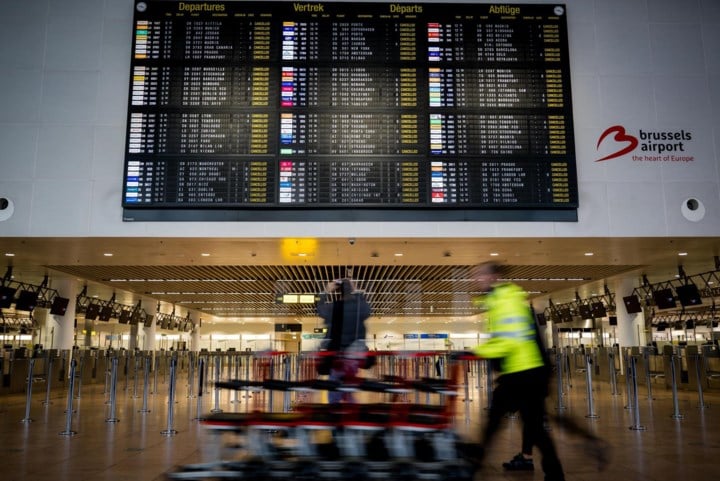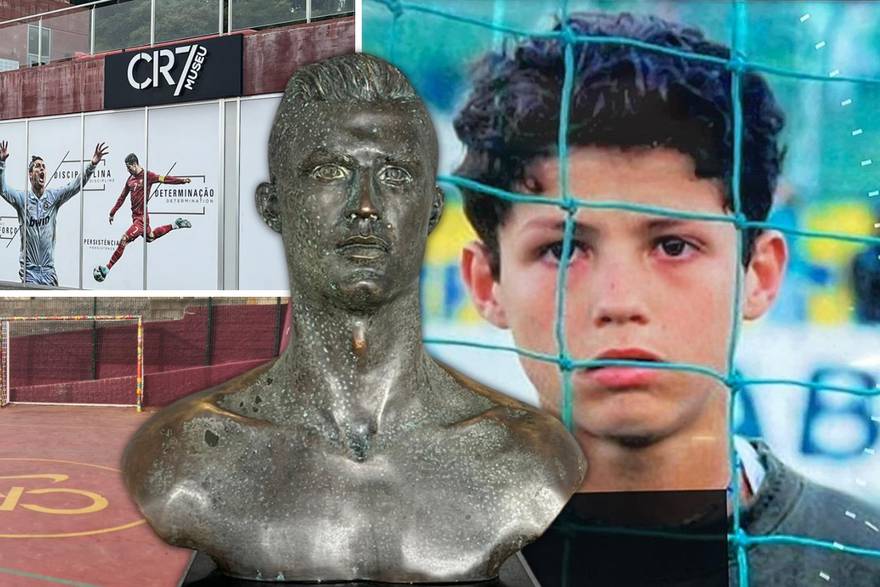Opinion | The wolf is the umpteenth totem in the culture struggle
:format(webp)/s3/static.nrc.nl/images/gn4/stripped/data127304212-d24078.jpg)
Last Saturday I walked with my dog on the large sand drift next to the A28 near Harderwijk. Roughly half a square kilometer of sand dunes, surrounded by pine trees. Beautiful.
Halfway through we came across cool prints of what only wolf legs could be. Much larger than that of a dog and with clear nail sales.
On the way back we arrived at a rise in the landscape from where you have a magnificent view over the sand pit: wavy sand, as far as the eye reaches. Suddenly my gaze was pulled by something shimmering, just in front of my feet. It turned out to be about twenty copper sleeves.
When I showed them to a friend in the afternoon and told him where I had found them, he said it was a favorite place of wolf hunters. He could also tell me that they proudly told each other in app groups that they had already killed at least fifteen and had dumped in the Randmeer.
Wolven
Since 2018 is Canis Lupus Back in the Netherlands. It started with one wolf from Bremen. Then there were two. In the meantime, more than a hundred wolves are wandering through the country, alive in eleven packs. They first concentrated in the north of the Veluwe, soon they spread over the entire Veluwelong and now they have also settled on the Utrechtse Heuvelrug.
With their distribution over the last forests of the Netherlands, the chance of encounters between people and wolf has increased. Received last year The Wolveneldpunt 2,668 visual reports. And with the increase in their numbers, the damage under cattle also increased. Last year 729 farm animals were killed by wolves, mostly sheep. Incidentally, that number does not fall into it with the four to thirty thousand animals that are injured or killed annually by stray dogs.
And so there are laws, rules, funds and authorities to arrange contact between people and wolf. For example, an ‘interprovincial wolven plan’ has been created, requirements have been drawn up for ‘wolf -resistant rasters’, a pilot study was initiated ‘Kuddewake dogs’, and therefore a ‘wolveneldpunt’ has been decorated. And as it turned out during last week’s parliamentary debate, there have now been ‘problem wolves’, a ‘northwestern European wolf collaboration’ and a scientific ‘habita fitness analysis’.
The technocracy that characterizes Dutch politics serves to massage the contrast that originated around the wolf. The anger that the farmer feels when he finds a dead sheep in the meadow in the morning, because the special experience that a walker gets from a sudden encounter with the wolf clashes. Where one sees a threat of have and good, the other person experiences the sublime of nature.
Culture struggle
For example, after De Boer, the windmill, the heat pump and the Tesla it is now the turn of the Wolf to grow into a totem of the culture struggle between alleged city dwellers and plattelanders who have come to the surface since the farm protests of 2019. BBB knew widely experienced feelings of dissatisfaction in the run -up to the Provincial States elections of March 2023 cleverly to forge a culture struggle of which the archetypal farmer was the anchorage with his connotations of steeringness, toughness and common sense.
This is not something exclusively Dutch. The wolf is on the rise throughout Europe. And so throughout Europe, a battle for space has erupted between citizens who attach to greenery and nature and farming communities that oppose those noble intentions.
Research among Greek and Italian farmers Teaches that the resistance against the Wolf is not only the continuation of an age -old enmity between farmers and animals in the wild, but that there is also a deeper layer of neglect and humiliation behind it. The respondents indicate that they are worried about their future, that they feel playball of decisions that have been made without them, that they are financially ground between state and large business, and that they feel like politics and pressed. Ever since Karl Marx, De Boer has been retarded, primitive and underdeveloped in the eyes of the urban elite.
Read also
Stop this wolven drama; The Netherlands is not a wilderness
Closer than Zutphen
It is no different in the Netherlands. Here too, politics and press are concentrated in the Randstad. Here too, politicians and journalists come mainly from the city. Here too they often have a cosmopolitan orientation: Washington is closer than Zutphen, so to speak. Here too, urban issues dominate the public debate. Here too, the state invests more in the city than in the countryside. Here too, state and press have withdrawn from the countryside: bus lines have disappeared, the general practitioner post and pharmacy are closed, the village school is sniffed, the bakery is gone, and the local fool has put the lead. This is the background of the wolf politicization.
We now know how to do nature policy. Forcing with the help of calculation models that are presented as unambiguous and infallible is a recipe for disaster. An open conversation with local communities about how to live with De Wolf is much more promising.
But only if the fixation on the city and west goes overboard. Ten million Dutch people live outside the Randstad. And they also matter.
And only when we see that not everything is possible in this small country. With fewer expats (roughly two thirds of the total migration), the population would shrink a little every year. With fewer hunting areas for the king and large industrialists, fewer training grounds for defense and a contraction of the livestock, we would have more room for the wolf and we can get this beautiful animal from the cultural struggle in which it ended up outside its fault.

:format(webp)/s3/static.nrc.nl/bvhw/files/2019/08/web-1708zatwongjpg.jpg)
:format(webp)/s3/static.nrc.nl/images/gn4/stripped/data132512191-bf7b93.jpg)
/s3/static.nrc.nl/images/gn4/data133305174-ec8c91.jpg)




